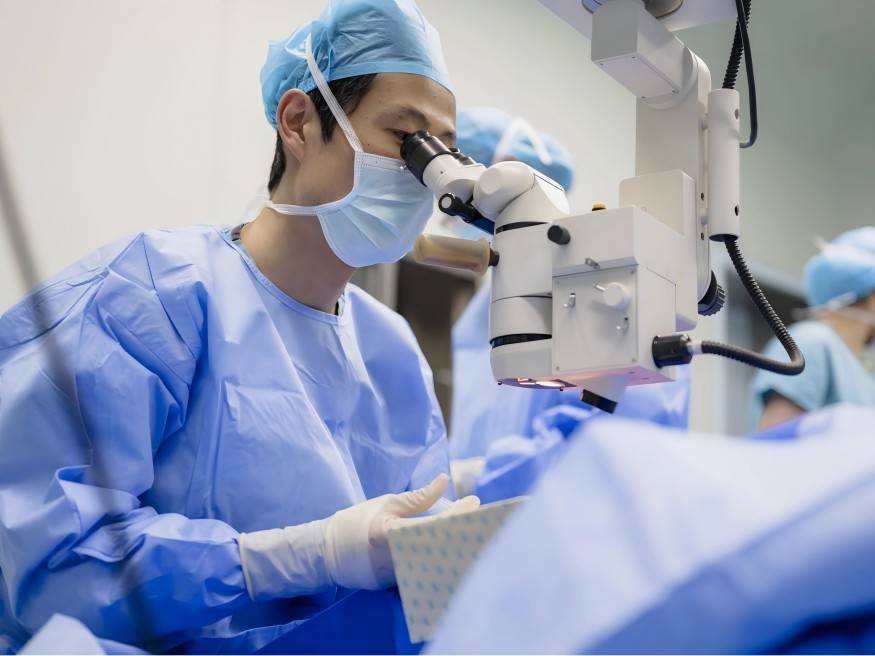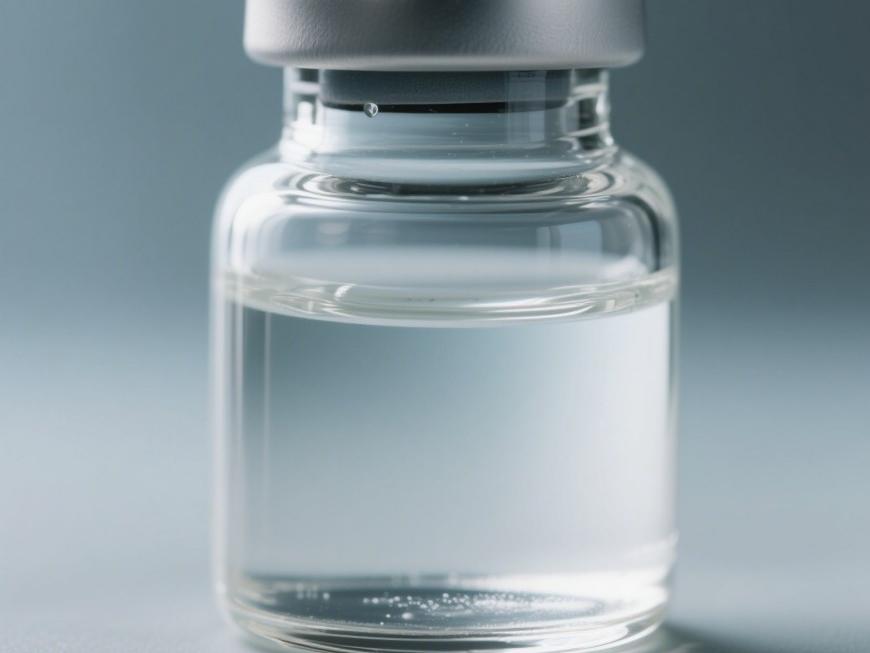Varying Molecular Weights of Hyaluronic Acid Drive Innovation in Cosmetics and Wellness Products
Гиалуроновая кислота is a naturally occurring high-molecular-weight linear polysaccharide. Since its initial discovery and extraction in 1934, it has garnered significant attention for its exceptional water-retaining properties and biocompatibility. Composed of repeating disaccharide units, this ingredient possesses outstanding viscoelasticity and moisturising capabilities. Products with molecular weights ranging from 50,000 to 8,000,000 Dalton are available to meet diverse formulation and functional requirements.
В качестве одного изclassic and highly effective natural moisturising agent, hyaluronic acid is widely present in animal tissues and microbial fermentation systems. Leveraging advanced production techniques, Зеленый источник (Зеленый источник (Зеленый источник (Green Spring))) Technology ensures the high purity, stability, and safety of its Порошок гиалуроновой кислоты or Green Spring raw materials through stringent control of both sourcing and manufacturing processes. These products find extensive application in skincare, health products, and functional foods.
Green Spring Technology'shyaluronic acid powder exhibits exceptional water-binding capacity, absorbing over 1000 times its own weight in moisture to enhance the hydration and restorative properties of end products. It also provides lubrication and sustained-release benefits, making it suitable for cosmetics and health products to improve user experience and efficacy. We customise molecular weights and solution characteristics according to client requirements, supporting product differentiation and innovation.
1 Characteristics of Hyaluronic Acid Powder
1.1 Moisturising Properties of Hyaluronic Acid
Hyaluronic acid (HA), a naturally occurring potent moisturising agent in human skin, is widely recognised as the gold standard in skincare due to its exceptional water-retaining capacity. Its molecular structure consists of alternating N-acetylglucosamine and glucuronic acid units, forming a highly extensible three-dimensional network in solution. This network directly binds vast quantities of water through strong polar bonds and hydrogen bonds, exhibiting absorption capabilities exceeding thousands of times its own weight.
Research indicates that hyaluronic acid's moisturising efficacy significantly surpasses that of numerous common hydrating agents. For instance, hyaluronic acid with a molecular weight of 3000kD maintains 87.1% moisture retention after 24 hours, substantially exceeding sorbitol's 32.4% and polyethylene glycol 4000's 10.5%. This formidable water-retaining capacity not only establishes its position among international skincare ingredients but also makes it an irreplaceable core moisturising agent in numerous premium skincare products.
Green Spring Technology, leveraging advanced biotechnology, is dedicated to providing clients with hyaluronic acid raw materials of varying molecular weight grades, high purity, and exceptional stability. This empowers brands to develop more market-competitive hydrating and moisturising products, delivering genuinely effective and safe hydration experiences to end consumers.
1.2 Hyaluronic Acid: The Support Structure for Skin Health and Elasticity
Beyond its exceptional moisturising properties, hyaluronic acid plays an irreplaceable role in maintaining the structural and functional health of the skin. As a core component of human proteoglycan polymers, it synergises with various glycosaminoglycans—such as chondroitin sulphate and keratan sulphate—to form macromolecular complexes with outstanding water-retaining and pressure-resistant capabilities when bound to core proteins.
This structure exhibits remarkable elasticity and resilience, contracting under pressure and rapidly returning to its original state upon pressure release. This provides effective support and cushioning for the skin, helping maintain tissue morphology and skin elasticity. The hydrophilic gel matrix formed by hyaluronic acid, proteins, and water not only strengthens intercellular connections and promotes metabolism but also possesses outstanding water-retaining capabilities. Simultaneously, it assists in enhancing the skin's barrier function, aiding defence against external pathogens.
Furthermore, this complex is extensively involved in multiple physiological processes, including cartilage development, aortic structural maintenance, ocular optical performance, and ovarian follicle growth. This underscores hyaluronic acid's vital role in sustaining overall tissue health and functional integrity.
2 Applications of Hyaluronic Acid
2.1 Hyaluronic Acid in Cosmetics
In this new era of skincare prioritising purity, safety, and efficacy, the innovative combination of hyaluronic acid and phospholipids is revolutionising cosmetic formulations. Research indicates that incorporating hyaluronic acid and phospholipids into a mixed system of oil and water phases creates a stable, fine emulsion without requiring traditional synthetic emulsifiers.
This natural emulsification system not only efficiently achieves oil-water fusion but also imparts exceptional moisturising properties to the product. Its dual-action efficacy of ‘emulsification + hydration’ surpasses that achievable with traditional chemical surfactants. This natural ingredient combination offers both high safety and skin affinity, making it widely applicable across various skincare categories such as creams, lotions, and cleansers. It provides an optimal solution for brands seeking to develop purer, more effective products that earn greater consumer trust.
Within cosmetic formulation, the integration of potent thickening and moisturising properties is emerging as a key technological focus. Recent research on a hyaluronic acid and polyoxyethylene (PEO) blend system has yielded significant progress, positioning this combination as a promising candidate for next-generation cosmetic thickeners.
Polyoxyethylene (molecular weight 100–5000kD) has long been a widely employed thickening agent in cosmetics, while hyaluronic acid solutions with a molecular weight of approximately 3000kD inherently possess exceptional viscosity characteristics. Research indicates that scientifically proportioning and blending these two components achieves significant synergistic enhancement—the composite system exhibits a viscosity substantially higher than the sum of its individual components, demonstrating outstanding rheological control capabilities.
This blended system not only effectively optimises product texture, enhancing the stability and application experience of formulations such as creams and lotions, but also harnesses hyaluronic acid's potent moisturising properties. It achieves ideal consistency and skin feel while delivering lasting hydration, truly embodying the principle of ‘thickening whilst moisturising, balancing texture and efficacy’.

Green Spring Spring Technology, leveraging its mature raw material R&D and supply system, offers hyaluronic acid across multiple molecular weight grades alongside tailored formulation solutions. This empowers brands to develop cosmetics that combine market competitiveness with functional differentiation, collectively advancing the industry towards greater efficacy, gentleness, and functionality.
2.2 Applications of Hyaluronic Acid in Health Products
2.2.1 Applications in Eye Health Products[9,10]
Within ophthalmology, hyaluronic acid gel serves as a high-performance biomaterial. Its exceptional viscoelasticity and biocompatibility have established it as a vital auxiliary material in numerous high-precision microsurgical procedures. Such products are already utilised in critical surgical processes including intraocular lens implantation, retinal detachment surgery, and corneal transplantation. They also demonstrate promising potential in applications such as ocular recanalisation and adjunctive treatment for dry eye syndrome.
As a hyaluronic acid raw material supplier, Green Spring Technology remains dedicated to the research, development, and production of high-quality hyaluronic acid. We are committed to providing clients with stable, safe, and pharmacopoeia-compliant raw materials, empowering downstream customers to develop more advanced and reliable eye health products. Together, we drive the standardised development and innovative application of industry technologies.
2.2.2 Applications of Hyaluronic Acid in Joint Health
Recently, the application of hyaluronic acid in joint health has once again captured industry attention. Its unique rheological properties—exceptional lubricity and cushioning capabilities—have established it as a favoured functional ingredient in joint care products, providing crucial technical support for the development of injectable joint formulations.
Since the 1980s, hyaluronic acid has been extensively researched and applied in joint health across multiple nations, with product development and international collaboration continually deepening. Enterprises in regions such as Japan have pioneered this field, actively advancing technological R&D and market applications. Their hyaluronic acid joint care products have garnered positive market feedback through tangible functional efficacy.
As a supplier of high-quality hyaluronic acid raw materials, Green Spring Technology is committed to providing joint health product manufacturers with hyaluronic acid ingredients of varying molecular weights, high purity, and exceptional stability. This enables clients to develop internationally competitive joint care solutions, jointly driving industry innovation and technological advancement.
3. Hyaluronic Acid's Safety Gains Broad Recognition; Biocompatibility Advantages Drive Post-Surgical Care Product Innovation
As a natural polysaccharide, hyaluronic acid has long been regarded as a benchmark for high-safety raw materials due to its excellent biocompatibility and low antigenicity. Its structure closely matches endogenous human hyaluronic acid, presenting minimal risk of foreign body reactions. Demonstrating outstanding tolerability in practical applications, it has become an ideal functional ingredient across multiple fields.
In topical applications, hyaluronic acid exhibits low absorption rates, further minimising potential tissue reactions and enhancing usage safety. Currently, macromolecular cross-linked membranes and composite functional formulations developed from hyaluronic acid represent key industry R&D focuses. These materials demonstrate broad prospects in non-therapeutic fields such as post-operative care and wound repair, owing to their favourable sustained-release properties and tissue adaptability.
Green Spring Technology consistently adheres to high-standard production principles, supplying clients with high-purity, rigorously quality-controlled hyaluronic acid raw materials. This empowers enterprises to develop safer, more reliable health care products, jointly advancing innovation in hyaluronic acid applications for post-operative management and beyond.

4 Hyaluronic Acid Production Technology: Microbial Fermentation Emerges as Mainstream Approach; Green Spring Technology Leads Industry Quality Enhancement with Advanced Processes
Amid sustained market growth in demand for hyaluronic acid raw materials, its production technologies have undergone significant evolution. Currently, hyaluronic acid production primarily follows two pathways: animal tissue extraction and microbial fermentation. Confronted with limitations such as finite raw material sources, complex processes, and high costs, animal extraction struggles to achieve large-scale production. Consequently, microbial fermentation has emerged as the industry's mainstream approach for efficient and sustainable manufacturing.
Microbial fermentation leverages selected strains and modern fermentation techniques to produce high-purity hyaluronic acid with precisely controllable molecular weight, while offering environmental and efficiency advantages. Green Spring Technology remains committed to advancing and optimising this technology. Through strain improvement and precision fermentation control systems, it effectively enhances yield and product consistency, ensuring high-quality raw materials and stable supply.
The adoption of fermentation processes not only effectively mitigates the supply uncertainties and potential risks associated with animal-derived materials but also provides customers with batch-consistent, high-purity hyaluronic acid raw materials of exceptional performance. This empowers downstream enterprises to develop safer, superior, and more market-competitive innovative products across cosmetics, health products, and functional skincare sectors.
Green Spring Technology leverages advanced microbial fermentation technology to deliver high-quality hyaluronic acid raw materials in diverse specifications. Our products offer core advantages including stable purity, precise molecular weight distribution, and strong batch consistency, making them widely applicable across cosmetics, health products, and other sectors. By choosing Green Spring Technology, you gain not only safe, compliant premium raw materials but also access to our professional technical support to accelerate product innovation and enhance end-market competitiveness.
Contact us at helen@greenspringbio.com or WhatsApp: +86 13649243917 now to obtain the latest product specifications, samples, and quotations!
Справочные материалы:
[1] майерк, палмер джей-ви. Полисаксовая гиалуроническая кислота стекловидного тела [J]. J биолхем, 1934, (107): 629-633.
[2] у донгру. Биохимия углеводов [м]. Пекин: издательство «высшее образование», 1987: 627.
[3] нагаи масаёси. Косметические ингредиенты. JP Show 62-158203, 1987.
[4] чжан шимин, чжан луронг. Химия жизни [J]. 1991, (11) 2: 8-9.
[5] уджири йошитака. Эмульсирующая композиция. Джей-пи шоу 62-45336, 1987.
[6] сюй хон, Лу чжихуа. Китайский журнал биохимических препаратов [J]. 1998, (19) 5: 222 — 223.
[7] бреске джей у. Hyaluronic acid/hyaluronate tased ароматические продукты, WO 85/04803, 1985.
[8] хоу юньчжи, чжан тяньаньминь, ню гюньчжэнь. Китайский журнал биохимических препаратов [J]. 2003, (24) 5: 262-264.
[9] чжоу либин, чжан дацинь. Китайский журнал биохимических препаратов [J]. 1998, (5): 289.
[10] чжан яньбинг, тянь ё цин. Китайский журнал биохимических препаратов [J]. 1998, (5): 288.
[11] Li Weiping, Liu Shangli, Lin Daoxian. Китайский журнал биохимических препаратов [J]. 1998 год, (5): 252-254.
[12] Лу руймин. Журнал сельскохозяйственного колледжа нинся [J]. 2001, (22) 1: 62 — 64.
-
Предыдущий
Hyaluronic Acid: A Driver of Innovation in Health Products
-
Следующий проект
Explore Fermented Low-Molecular-Weight Hyaluronic Acid for Your Product Formulation


 Английский язык
Английский язык Французский язык
Французский язык На испанском языке
На испанском языке Русский язык
Русский язык Корейская народно-демократическая республика
Корейская народно-демократическая республика На японском языке
На японском языке




